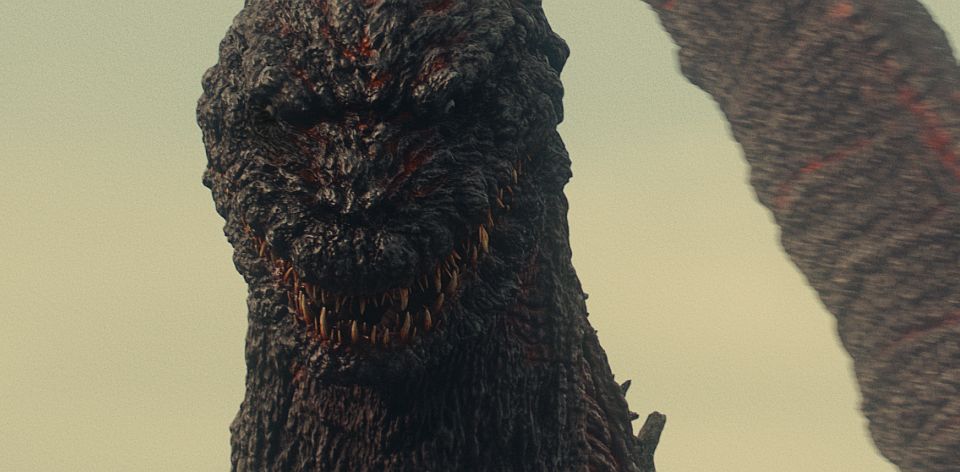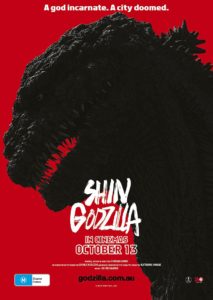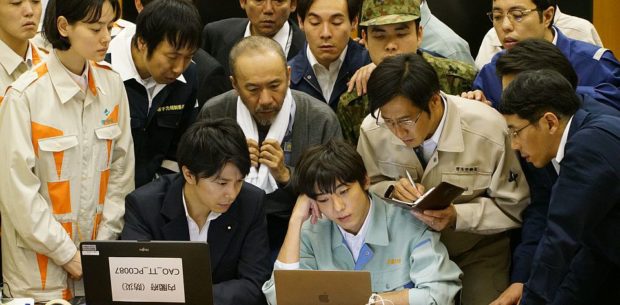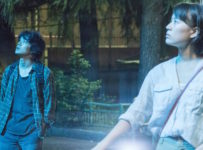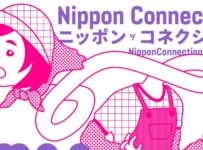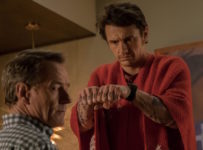If the original 1954 Godzilla was about Japan in the wake of “post War” destruction, then SHIN GODZILLA (シン・ゴジラ aka Godzilla Resurgence) is about the burden of seven decades under that black spot in history. Of course, the devastation and response to the 2011 Tōhoku earthquake and tsunami and subsequent Fukushima nuclear disaster serves as inspiration for the action (or lack thereof) in co-directors Hideaki Anno (Neon Genesis Evangelion) and Shinji Higuchi (Attack on Titan) latest collaboration. In fact, for all the building-stomping and familiar roars, the 31st film in the Godzilla franchise is just as much an inward looking reflection on Japanese bureaucracy and their complex relationship with the United States.
It’s panic on the streets of Tokyo when a strange eruption emanates from the bay area, and it soon becomes clear that there might be something living in the centre of the disturbance. As the parliamentary cabinet dithers over what kind of response to make, the creature makes its way onto land, and soon leaves an unspeakable path of destruction in its wake. A small group of volunteers must cut through the red tape and find a way of stopping the beast before it takes out the entire city – or worse!
SHIN GODZILLA is a parody of the whole kaiju genre in some ways, or at the very least is consciously playing with monster movie tropes while winking at a knowing audience. If the Americans can have a deliberately paced Godzilla, then Anno was going to make sure his update went at his own leisurely speed. As the third reboot of the long-running franchise, Anno and Higuchi are acutely aware of the legacy beyond the Japanese waters. Indeed, there’s a amusing exchange of documents where the various paper pushers discuss whether “Godzilla” or “Gojira” is the name of the beast. It’s here that we start to expose the heart of the film, which isn’t about Godzilla at all, but rather an essay on how Japan has come to view itself as a “tributary state,” and where the “post War” moniker has never really ceased to be true.
Nevertheless, SHIN GODZILLA is an odd bird. From the moment the first iteration of Godzilla emerges from Tokyo Bay, it’s clear that the filmmakers want to capture that same lo-fi spirit that has made the original so enduring. Godzilla was partly created through motion capture, but he does still look like a man in a (digital) suit at times, and that is undoubtedly deliberate. The scale and destructive force of the beast is tempered by long emotionless stretches of the volunteers standing around a computer screen, and important decisions are stuck in committees while buildings topple. Anno and Higuchi poke fun at the excessively long job titles that battle for screen real estate with the other subtitles. The final act of the film literally has Godzilla standing motionless in the middle of the city for what feels like an hour, as the crew desperately scrambles to find a way to take him out.
Clashing up against this is some typical over the top acting, especially from the “American” cast members. In a tip of the hat to the first US remake, there’s even a Raymond Burr lookalike that’s there purely for fanservice, although the argument could be made that the entire film is a construct of fanservice. If there are any doubts, composer Shiro Sagisu frequently quotes and remixes his own iconic “Decisive Battle” track from Neon Genesis Evangelion.
In the wider Godzilla/kaiju canon, SHIN GODZILLA both elevates the B-Grade while bringing the high-concept Hollywood versions down to Earth. While it may not redefine the way you think about kaiju, or even get you thinking about them at all, there’s an honesty to Anno and Higuchi’s outing, even if it does spend a fair bit of time chasing its own tail.
[stextbox id=”grey” bgcolor=”F2F2F2″ mleft=”5″ mright=”5″ image=”null”]2016 | US | DIR: Hideaki Anno, Shinji Higuchi | WRITERS: Hideaki Anno | CAST: Hiroki Hasegawa, Yutaka Takenouchi, Satomi Ishihara | DISTRIBUTOR: Madman Films (AUS) | RUNNING TIME: 120 minutes | RELEASE DATE: 13 October (AUS) [/stextbox]

